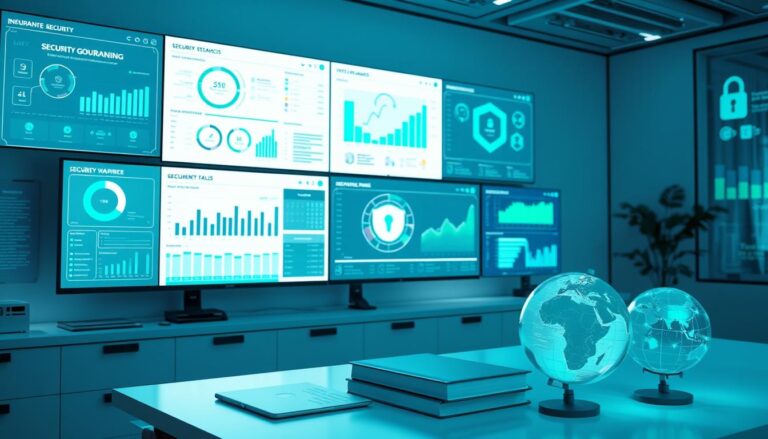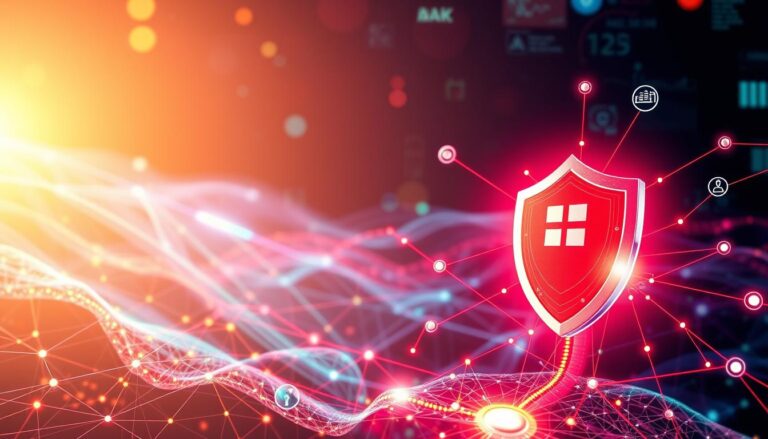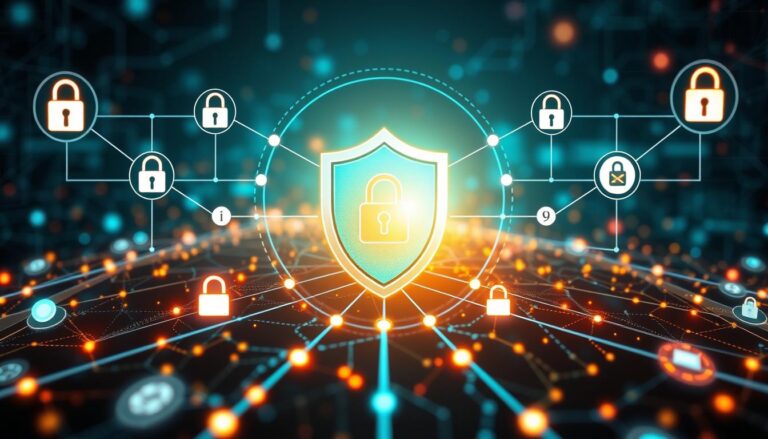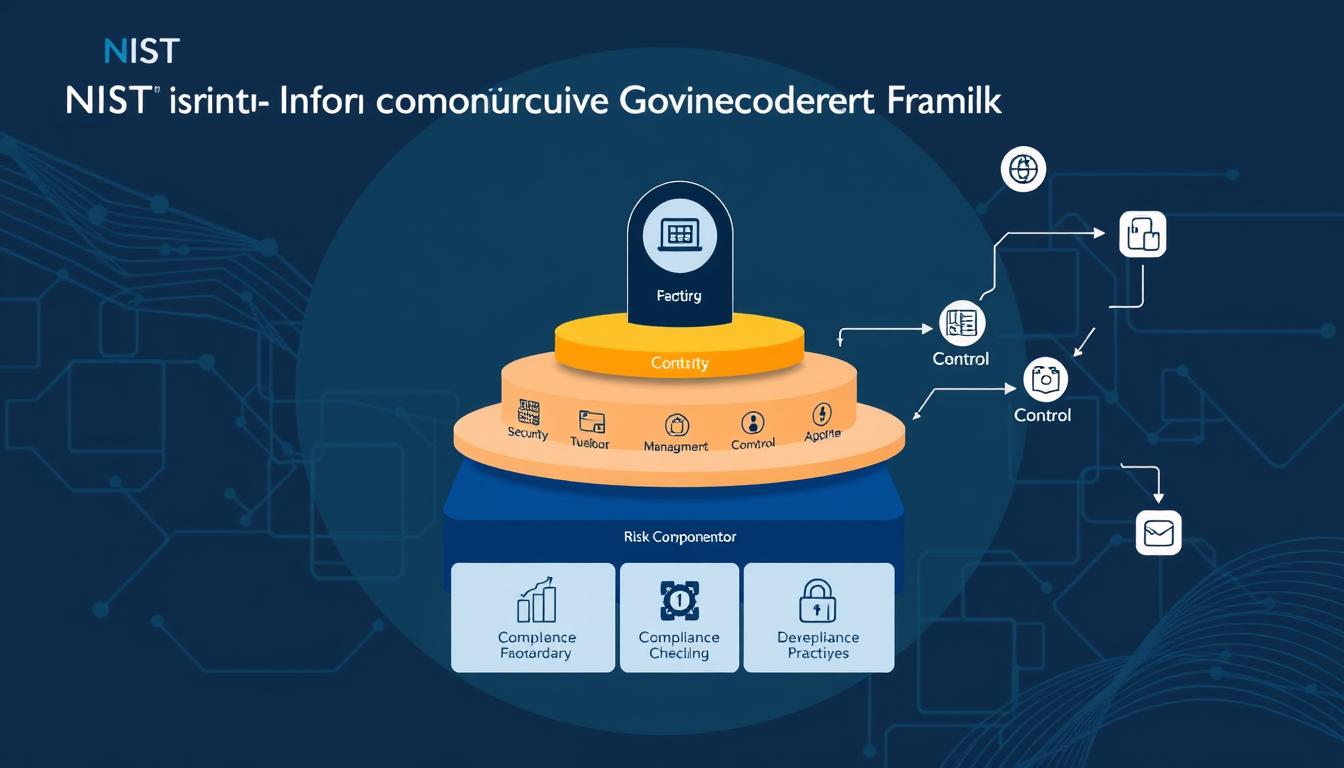
Did you know that over 60% of organizations have seen more cyberattacks? Many have faced severe disruptions. As cyber threats grow, it’s vital for businesses to strengthen their cybersecurity. The NIST Cybersecurity Framework (CSF) offers a clear way to manage risks.
This framework helps organizations set risk levels, use effective security controls, and watch for new threats. It’s a key tool for keeping digital assets safe and building resilience.
To create a strong governance strategy, following a step-by-step approach is key. This ensures your organization’s digital assets are well-protected. In this article, we’ll dive into the NIST CSF and how to implement it effectively. You’ll learn how to make your cybersecurity practices strong and follow industry best practices.
Understanding the Importance of NIST Information Security Governance
Keeping a strong cybersecurity posture is more important than ever for companies. The NIST security guidelines are key to managing information security well. Following these guidelines helps protect against cyber threats.
In 2020, about half of U.S. companies said they followed NIST compliance. This shows how vital it is. The NIST Cybersecurity Framework (CSF) was created in 2014. It has five main parts: Identify, Protect, Detect, Respond, and Recover. These parts help keep important information safe.
Data breaches and cyberattacks are on the rise. A clear plan for information security is essential. Companies should follow NIST guidelines to protect their data well.
Using the NIST CSF has many benefits. It helps meet legal needs and follow other security rules. It also makes it easier to make good decisions and use resources wisely in cybersecurity.
Being committed to NIST compliance builds trust with others. It shows you take cybersecurity seriously.
| Key Features of NIST Cybersecurity Framework | Description |
|---|---|
| Framework Structure | Consists of five core functions: Identify, Protect, Detect, Respond, and Recover. |
| Compliance Impact | Helps organizations comply with various legal and regulatory requirements. |
| Global Recognition | The framework is acknowledged internationally, aiding in improving cybersecurity measures. |
| Adaptability | Offers a risk-based approach suitable for various sectors, including government and private entities. |
| Implementation Tiers | Ranges from Partial (Tier 1) to Adaptive (Tier 4), reflecting maturity in cybersecurity practices. |
Overview of the NIST Cybersecurity Framework
The NIST cybersecurity framework helps organizations manage cybersecurity risks well. It guides you through key steps to boost security and meet NIST information security standards. It’s designed for all kinds of organizations, big or small, in many industries.
The framework has five main parts: Identify, Protect, Detect, Respond, and Recover. Each part has categories and subcategories for different cybersecurity tasks. This makes it easy to follow cybersecurity best practices that fit your specific needs.
NIST keeps working to improve the framework. For example, on January 13, 2025, NIST NCCoE will share a draft of NIST IR 8374 Revision 1. It’s about managing ransomware risks. Comments are due by March 14, 2025.
Also, on December 16, 2024, Draft NIST Internal Report (IR) 8467 was released. It combines CSF 2.0 and NIST Privacy Framework (PF) version 1.0 for genomic data security and privacy.
The updates, like translating CSF 2.0 into many languages, show its worldwide importance. NIST keeps updating to tackle new threats. Following NIST information security standards is key to protecting your organization from cyber threats.
Core Functions of the NIST Cybersecurity Framework
The NIST Cybersecurity Framework has five key functions. These functions are the foundation for a strong cybersecurity plan. They help organizations manage risks and improve their security.
Identify: Understanding Your Assets and Risks
The Identify function helps you know what you have and what risks you face. It’s about understanding your systems, people, and data. This step is key to knowing your current and future cybersecurity needs.
It helps you focus on the most important security efforts. This is based on your business needs and risk levels.
Protect: Implementing Safeguards
The Protect function is about setting up strong defenses. It includes things like access controls and encryption. These steps help prevent or reduce the impact of cyber threats.
By planning ahead, you can limit the damage from cyber attacks.
Detect: Monitoring for Possible Threats
Detecting threats early is vital for managing incidents well. This function is about using tools like SIEM to watch for threats. It helps check if your defenses are working and respond quickly to threats.
Respond: Planning for Incidents
The Respond function stresses the need for good incident response plans. Having these plans helps manage cyber incidents quickly. It includes steps like planning, communication, and analysis to keep incidents under control.
Recover: Restoring Normal Operations
The Recover function is about getting back to normal after a cyber attack. Quick recovery is key to avoiding long disruptions. It involves making strong plans, learning from past incidents, and clear communication.
Establishing Goals for Your NIST Implementation
Setting clear NIST goals is key to a successful NIST framework implementation. Your organization must know its risk tolerance levels. Start by asking: What assets need protection? Which vulnerabilities need quick action?
By setting specific, measurable goals, you can make a detailed plan. This plan helps use resources wisely and track progress.
The NIST Cybersecurity Framework (CSF) stresses the importance of Organizational Profiles. These profiles help measure your cybersecurity accurately. The CSF’s tiered approach guides improvement, showing each organization’s unique risks and risk appetites.
Before moving to higher tiers, do a cost-benefit analysis. Tier 1 has little cybersecurity awareness. Tier 2 knows risks but lacks a unified strategy. Tier 3 uses recommended measures well, with executive support. Tier 4 needs big investments, key in banking and healthcare.
Using a structured approach to NIST goals boosts your cybersecurity. Focus on the five core functions of the NIST CSF: Identify, Protect, Detect, Respond, and Recover. Each function has specific categories for efficient practices.
| Tier Level | Understanding of Cybersecurity | Prioritized Measures | Investment Required |
|---|---|---|---|
| Tier 1 | Minimal Awareness | Low | Low |
| Tier 2 | Fair Understanding | Moderate | Moderate |
| Tier 3 | Good Understanding with Best Practices | High | High |
| Tier 4 | Advanced Awareness | Very High | Very High |
NIST Information Security Governance: Key Components
Creating a solid governance framework is key for good NIST Information Security Governance. This framework has important parts for managing cybersecurity policies and setting out clear roles in the organization.
Key components of this governance framework include:
- Governance Function: The NIST Cybersecurity Framework 2.0 has a governance function to better manage cybersecurity. It has four main parts—Organizational Context, Risk Management Strategy, Policies and Procedures, and Roles and Responsibilities.
- Cybersecurity Policies: Good cybersecurity policies guide your organization’s security approach. They make sure you follow NIST standards and meet regulatory rules.
- Organizational Roles: Clear roles in your organization help with accountability. Everyone knows their part, leading to a united security effort.
- Continuous Training Programs: Regular training helps employees understand cybersecurity threats and best practices. It builds a security-focused culture in your organization.
Putting cybersecurity policies into the governance framework helps leaders manage risks well. It also makes sure everyone talks about cyber risks. This makes sure these issues get the right attention.
Adopting a better governance framework based on NIST standards can really help your organization. It makes cybersecurity a core part of managing risks. By setting up these key parts, you help create a safe work environment. This environment tackles privacy and digital supply chain issues well.
| Component | Description |
|---|---|
| Governance Function | Four categories addressing organizational context, risk management strategy, policies and procedures, and roles and responsibilities. |
| Cybersecurity Policies | Comprehensive guidelines ensuring compliance and effective management of cybersecurity risks. |
| Organizational Roles | Clearly defined responsibilities promoting accountability across the organization. |
| Continuous Training Programs | Regular training to enhance employee awareness and understanding of cybersecurity. |
Assessing Your Current Cybersecurity Posture
Understanding your current cybersecurity posture is key to improving your organization’s protection. Regular evaluations help spot areas needing improvement. This not only reduces risks but also keeps your practices up to date.
Conducting a Risk Assessment
A risk assessment is a detailed look at your assets, threats, and possible impacts. It helps create a risk profile that shows your vulnerabilities. By knowing where risks are, you can focus on improving your cybersecurity.
This process helps make better decisions about where to use resources and how to improve.
Identifying Vulnerabilities in Your Systems
After a risk assessment, you need to find vulnerabilities in your systems. Vulnerability assessments reveal weaknesses that attackers might use. Fixing these weaknesses makes your defenses stronger and keeps you in line with NIST standards.
Checking your vulnerabilities often keeps your cybersecurity strong against new threats.
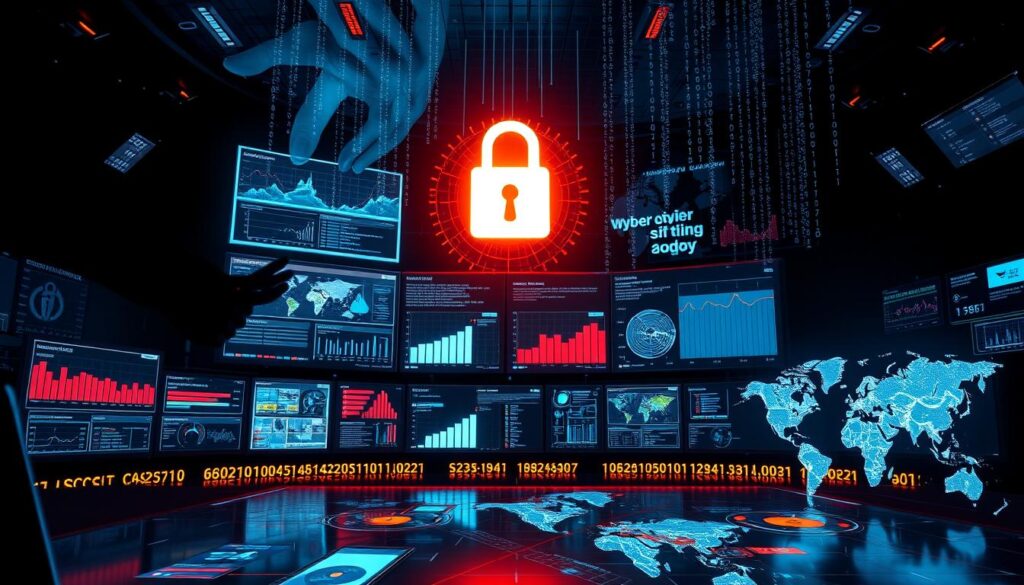
Developing a Governance Framework Aligned with NIST Standards
Creating a governance framework that follows NIST standards is key for good cybersecurity management. It helps you tackle cybersecurity in a structured way. You set up clear roles, responsibilities, and policies that meet NIST standards. This framework boosts your organization’s commitment to cybersecurity, making sure everyone works together.
When building your governance framework, think about these important parts:
- Assessment of Current Posture: Check your organization’s current cybersecurity by talking to IT teams and security experts. This shows what’s working well and what needs work.
- Defining Governance Roles: Make it clear who is in charge of making policies, assessing risks, and handling incidents. This makes sure everyone knows their job and helps keep things running smoothly.
- Implementation of Security Controls: Use security controls from the NIST Cybersecurity Framework (CSF) to protect your organization. Tools like firewalls and encryption are important for keeping data safe.
- Monitoring and Detection: Set up a strong monitoring system with tools like SIEM to catch threats early. This helps prevent cyber attacks.
- Continuous Improvement: Keep updating your framework to stay ahead of new threats and technologies. Getting help from outside experts can be very useful.
This framework is like a roadmap for your cybersecurity strategy. Following NIST standards improves your security and helps you handle cyber risks better.
Choosing the Right Security Controls from NIST SP 800-53
Choosing the right security controls is key to a strong cybersecurity plan. Using NIST SP 800-53 helps organizations strengthen their defenses. It offers a detailed framework of controls for different security needs.
With over 1,000 controls in 18 families, it’s important to know them well. This knowledge helps tackle specific cybersecurity issues effectively.
Understanding Security Control Families
It’s vital to understand the security control families in NIST SP 800-53. Here’s a quick look at some important ones:
- Access Control (AC): Deals with account management and logging remote access.
- Incident Response (IR): Covers training and reporting for managing threats.
- Risk Assessment (RA): Focuses on finding vulnerabilities and managing cyber risks.
- Audit and Accountability (AU): Handles audit policies and report generation.
- Security Assessment and Authorization (CA): Includes ongoing monitoring protocols.
Mapping Controls to Organizational Needs
Matching controls to your organization’s needs makes them more effective. A good mapping process involves:
- Identifying your unique risk exposures.
- Choosing controls based on your risk level.
- Matching resources with the most important security solutions.
This focused approach can lead to a 25% drop in security vulnerabilities over time. Customizing controls helps tackle immediate risks and supports broader goals.
| Control Family | Key Components |
|---|---|
| Access Control (AC) | Account management, remote access logging |
| Incident Response (IR) | Training, reporting protocols |
| Risk Assessment (RA) | Vulnerability scanning, risk management |
| Security Assessment and Authorization (CA) | Continuous monitoring |
Implementing and Tailoring NIST Controls to Your Needs
Implementing NIST controls needs a custom approach. This ensures they fit your organization’s unique needs. It’s about making security controls work for your specific risks.
Adapting these controls involves tweaking them to meet your needs. NIST SP 800-12 Rev. 1 and NIST SP 800-137 offer guidance. NIST SP 800-37 Rev. 2 also stresses the importance of adjusting controls to keep your security strong.
It’s important to keep checking if your security controls are working. You might need to change them if your risks change. NIST SP 800-137A says adjusting assessments can help manage risks better.
Understanding the NIST 800-53 framework is key. It has over 1,000 security controls for different parts of information systems. Using these guidelines can really help improve your cybersecurity, with 50% of companies already doing so.
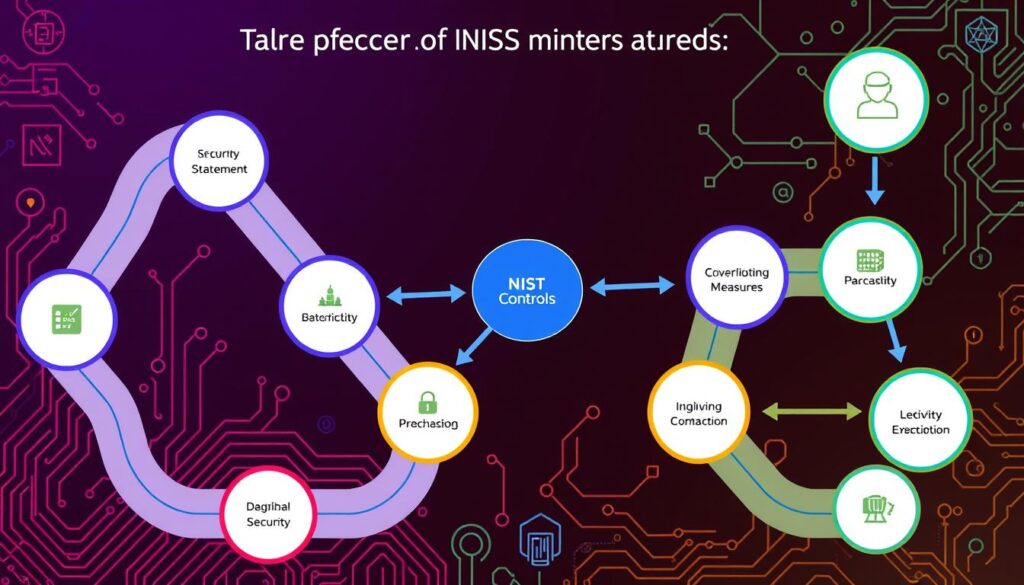
The NIST framework works for many types of companies. It’s used by companies in all sorts of industries, including critical ones. As you work on implementing NIST controls, remember to keep improving and monitoring your security. This will help protect your organization from cyber threats.
| Step | Description | Reference Document |
|---|---|---|
| 1 | Identify organizational requirements for tailored security controls. | NIST SP 800-12 Rev. 1 |
| 2 | Modify security control baseline according to specific risks. | NIST SP 800-37 Rev. 2 |
| 3 | Incorporate compensating controls as needed. | NIST SP 800-53 |
| 4 | Continuously assess tailored implementations and make adjustments. | NIST SP 800-137A |
| 5 | Ensure alignment with the NIST Cybersecurity Framework. | NIST Cybersecurity Framework |
Creating and Maintaining an Effective Monitoring Strategy
Creating a solid monitoring strategy is key to strong cybersecurity. It helps you quickly spot and handle threats, keeping your data safe. With cyber threats being a major global risk, keeping a close eye on your systems is more important than ever.
Utilizing SIEM Tools for Continuous Monitoring
SIEM tools help you gather and analyze security data from all your systems. They make your monitoring better by catching odd behavior right away. Companies using these tools see fewer security problems, showing how important it is to keep watching.
With 60% of breaches caused by poor monitoring, getting SIEM tools is a smart move.
Establishing Incident Response Protocols
Having good incident response plans means your team can act fast when a cyber attack happens. This helps limit damage and get systems back up quickly. Rules from groups like NIST 800-53 push for better response plans.
A strong plan not only makes your systems more resilient. It also makes sure your monitoring and security work together smoothly.
| Aspect | Importance |
|---|---|
| Continuous Monitoring | Identifies vulnerabilities and reduces the average time to breach detection, currently at 206 days. |
| SIEM Tools | Automates data analysis and improves the accuracy of threat detection by centralizing security information. |
| Incident Response | Prepares teams for immediate action to control incidents, minimizing possible damages and recovery time. |
| Regulatory Compliance | Ensures following of rules like GDPR and HIPAA, cutting down legal and financial risks. |
Training and Building a Cybersecurity Awareness Culture
Creating a strong security culture starts with good training and awareness programs for everyone. In the manufacturing world, it’s key to train on cybersecurity at least once a year. This keeps your team up-to-date on threats and how to avoid them.
Old-school training methods don’t really work. They don’t get people to change their ways when it comes to cybersecurity. Good training should teach people to avoid risks, like not opening emails from strangers, and to do safe things, like making strong passwords.
Keeping up with cybersecurity training helps people remember and use security practices better. Companies can make security more visible by sharing tips in meetings and posting reminders everywhere. Studies show that training that uses real-life examples works best because it’s more relatable.
Using the RAINSTORMS acronym can help make training better: Real, Actionable, Interactive, New, Small, Testable, Owned, Relevant, Memorable, and Simple. You can check if training works by testing people before and after with quizzes or fake phishing attacks.
Training should be different for people on the shop floor and office workers. Adding fun or memorable tips can keep people interested. The National Initiative for Cybersecurity Education (NICE) offers lots of free training resources.
In October, there are special weeks for different cybersecurity topics. This helps plan awareness efforts:
- Week of October 5: “If You Connect It, Protect It”
- Week of October 12: “Securing Devices at Home and Work”
- Week of October 19: “Securing Internet-Connected Devices in Healthcare”
- Week of October 26: “The Future of Connected Devices”
Building a strong security culture through good training and awareness programs makes your employees more vigilant. They become key players in keeping sensitive information safe.
Conclusion
The path to strong cybersecurity governance through NIST information security is ongoing. The NIST Cybersecurity Framework (CSF) was introduced in 2014. It has helped organizations improve their cybersecurity practices.
Now, NIST CSF includes a new “Govern” function. This highlights the importance of good governance in aligning security with business goals.
The Unified Control Framework has made compliance easier by reducing redundant controls. It shows how cybersecurity fits into managing risks. This approach makes organizations more resilient and helps all departments work together.
To keep improving in cybersecurity governance, you need to stay updated with regulatory changes. Use the steps from this article to boost your cybersecurity. This way, you can stay ahead of threats and protect your organization.
Source Links
- How to Implement the NIST Cybersecurity Framework (CSF) to Foster a Culture of Cybersecurity
- 5 Steps NIST Framework Implementation
- 6 Steps to Implement the NIST Cybersecurity Framework
- What is NIST and Why Is It Critical to Cybersecurity?
- Information Security Governance – ERMProtect Cybersecurity
- Understanding the NIST cybersecurity framework
- Cybersecurity Framework
- NIST Cybersecurity Framework (CSF)
- The NIST Governance Function: What Businesses Need To Know | Rhymetec
- The CSF 1.1 Five Functions
- NIST Cybersecurity Framework (CSF) Core Explained
- NIST Implementation Tiers Explained
- NIST Cybersecurity Framework 2.0 Adds Governance to Emphasize Risk
- What is the NIST Cybersecurity Framework? | IBM
- ISO 27001 vs. NIST Cybersecurity Framework
- NIST Cybersecurity Framework Examples and Best Practices
- Improve Your Security Posture with NIST Cybersecurity Framework
- Creating a Governance Plan to Adhere to the NIST Cybersecurity Framework
- What is NIST Cybersecurity Framework (CSF) 2.0?
- 7 Cybersecurity Frameworks to Reduce Cyber Risk in 2024
- NIST SP 800-53 Control Families Explained
- NIST 800-53 vs NIST 800-171 Simplified: Key Differences & Understanding Which Framework You Need
- Key Considerations for NIST 800-53 Control Family Selection for CISOs
- tailoring – Glossary | CSRC
- A Detailed Guide to NIST 800-53 Standard (2024 Updated)
- NIST Cybersecurity Framework (CSF) Controls Fundamentals | AuditBoard
- Navigating Cybersecurity Governance: How to Build an Effective Strategy | Secureframe
- NIST SP 800-137, Information Security Continuous Monitoring (ISCM) for Federal Information Systems and Organizations
- Creating a Culture of Security
- NIST’s SP800-50r1 – Building a Cybersecurity and Privacy Learning Program
- NIST CSF 2.0: The Rise of Governance and IT Compliance | AuditBoard
- All You Need to Know about the NIST Cybersecurity Framework
- NIST Cybersecurity Framework: Key Benefits and Implementation – Validato
